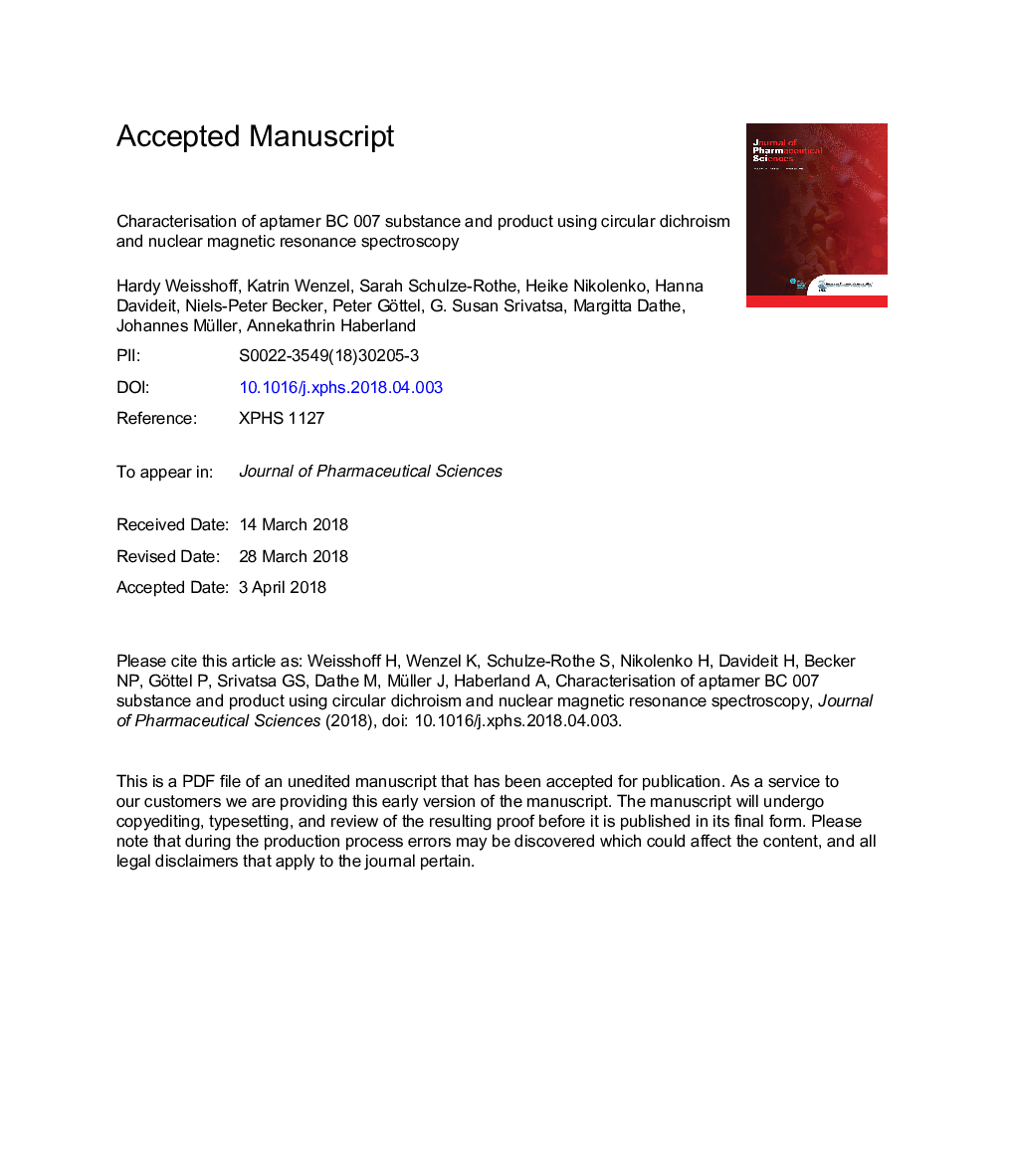| Article ID | Journal | Published Year | Pages | File Type |
|---|---|---|---|---|
| 8513087 | Journal of Pharmaceutical Sciences | 2018 | 29 Pages |
Abstract
Possible unwanted folding of biopharmaceuticals during manufacturing and storage has resulted in analysis schemes compared to small molecules that include bioanalytical characterization besides chemical characterization. Whether bioanalytical characterization is required for nucleotide-based drugs, may be decided on a case-by-case basis. Nucleotide-based pharmaceuticals, if chemically synthesized, occupy an intermediate position between small-molecule drugs and biologics. Here, we tested whether a physicochemical characterization of a nucleotide-based drug substance, BC 007, was adequate, using circular dichroism (CD) spectroscopy. Nuclear magnetic resonance confirmed CD data in one experimental setup. BC 007 forms a quadruplex structure under specific external conditions, which was characterized for its stability and structural appearance also after denaturation using CD and nuclear magnetic resonance. The amount of the free energy (ÎG0) involved in quadruplex formation of BC 007 was estimated at +8.7 kJ/mol when dissolved in water and +1.4 kJ/mol in 154 mM NaCl, indicating structural instability under these conditions. However, dissolution of the substance in 5 mM of KCl reduced the ÎG0 to â5.6 kJ/mol due to the stabilizing effect of cations. These results show that positive ÎG0 of quadruplex structure formation in water and aqueous NaCl prevents BC 007 from preforming stable 3-dimensional structures, which could potentially affect drug function.
Related Topics
Health Sciences
Pharmacology, Toxicology and Pharmaceutical Science
Drug Discovery
Authors
Hardy Weisshoff, Katrin Wenzel, Sarah Schulze-Rothe, Heike Nikolenko, Hanna Davideit, Niels-Peter Becker, Peter Göttel, G. Susan Srivatsa, Margitta Dathe, Johannes Müller, Annekathrin Haberland,
